In 1960, as a twenty-year old corporal in the SA Armoured Corps, Johnny Kieser was one of 15 selected South Africans who were sent to England to train as paratroopers and then to return to establish South Africa’s first airborne unit. Under command of Cmdt WP Louw (later to become Chief of the South African Army) they were trained in basic and advanced parachuting techniques, the marking and manning of Dropping Zones, despatching of paratroopers and as parachute instructors.
Their course took place at No 1 Parachute Training School at RAF Abingdon in Oxfordshire. They trained for three months before returning to South Africa, where they converted Dakota aircraft for static-line parachuting, tested various parachute types and built the necessary parachute training apparatus in Tempe, Bloemfontein. On 1 April 1961 South Africa’s first airborne unit, 1 Parachute Battalion, came into being.
Johnny helped train the first paratroopers in the country and quickly became an instructor of note. He was instrumental in testing the new C-130 Hercules and later the C-160 Transall aircraft for parachuting when these were taken into service by the SA Air Force. He travelled abroad, studying military parachuting in countries such as Germany and France. In 1968 he was one of the first two members of the battalion to be trained in tactical military free-fall. Free-fall parachuting became one of the great loves of his life, and he went on to become a judge of civilian free-fall parachuting on an international level.
He also set the extremely high standard for military free-fall parachuting that was to be a hallmark of 1 Parachute Battalion. In 1977 he was one of the first South Africans to be trained in high altitude, low opening parachuting (HALO). When he reached the rank of Warrant Officer Class 1, he became the Regimental Sergeant-Major (RSM) of 2 SA Infantry Battalion Group in Walvis Bay. At 29, he was one of the youngest RSMs in the SA Army. But he was soon transferred back to 1 Parachute Battalion, where he served for seven years as the RSM, from 1970 to 1977.
He continued to play a crucial role in the years when 1 Parachute Battalion was training paratroopers for Rhodesia, Swaziland, the Comores, Lesotho and the SWA Territory Force, as well as for 32 Battalion and for resistance movements like Unita and Renamo. He was commissioned as a captain in 1983 and took over command of the Parachute Training Wing at 1 Parachute Battalion. When parachute training was introduced for the armies of the Transkei and Bophuthatswana, Johnny Kieser was directly involved. He played a significant role in the design and construction of the Parachute training facility at Umtata Airport and was instrumental in the design of the huge new hangar for parachute training that was taken into use by 1 Parachute Battalion in 1986.
In March 1991 the Bophuthatswana Defence Force (BDF) decided to establish a parachute school, and recruited Major Johnny Kieser to be its commander. He took early retirement from the SADF after 35 years’ service. Appointed in the rank of lieutenant colonel, he established the BDF Parachute Training Wing of the Military School. After running several courses there, he was integrated into the new SANDF after the elections of 1994. Appointed as Officer Commanding the Parachute Training Centre, now a unit in its own right as a part of 44 Parachute Brigade, Johnny oversaw the standardisation of parachuting between the various homeland armies and the SA Army as part of the new SANDF. He played a crucial role in ensuring that throughout the process of integration of forces, the technical side of parachute training in the new SANDF remained on the highest possible level.
But in 1999 Lt Col Kieser reached the magical age of 60. Retirement for a professional soldier was compulsory. He had devoted almost 44 years of his life to the military, most of that time having been spent directly involved in parachute training.

